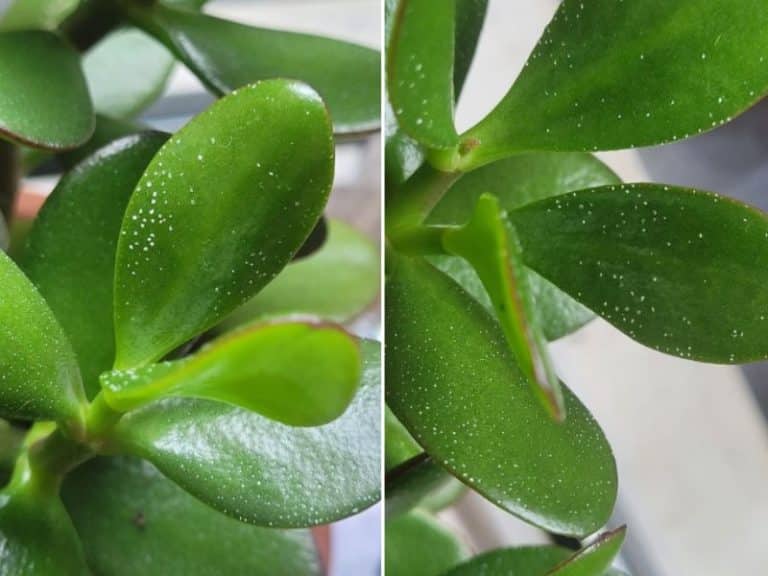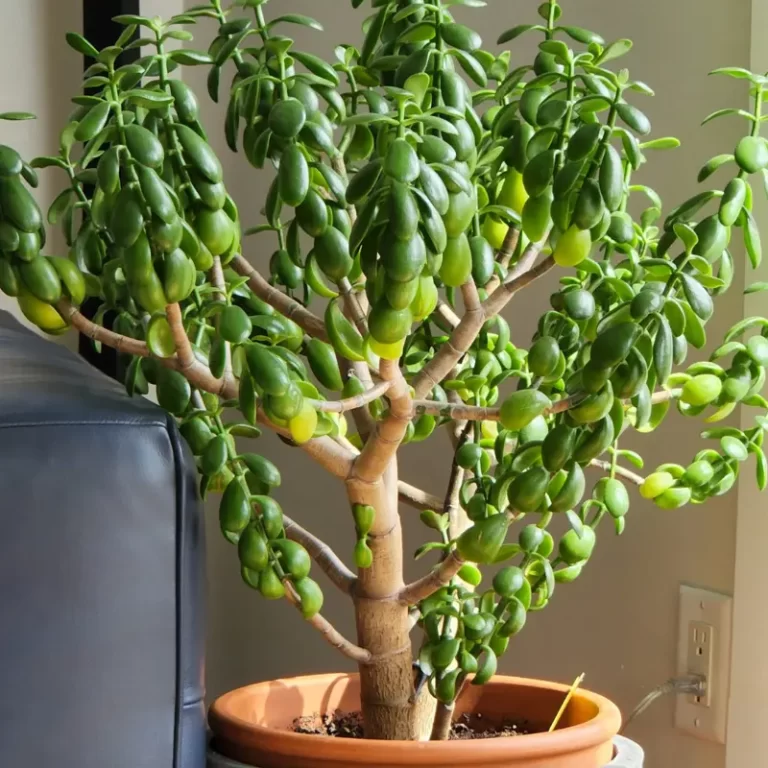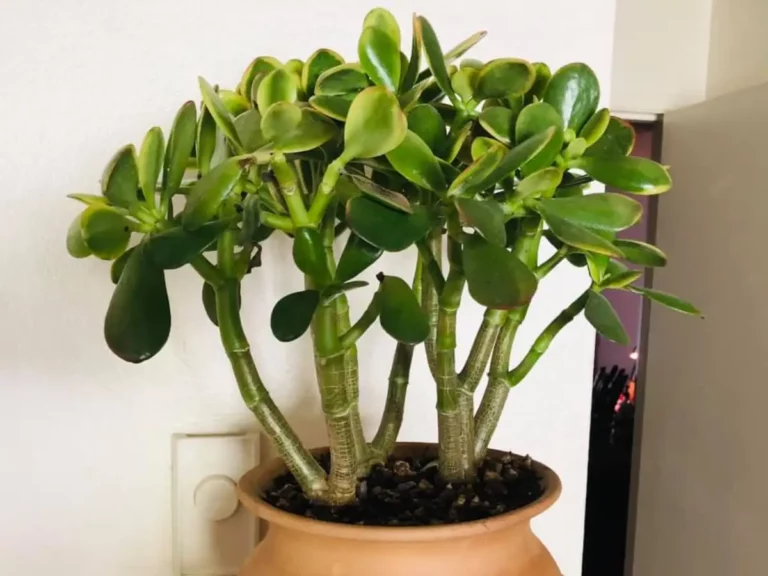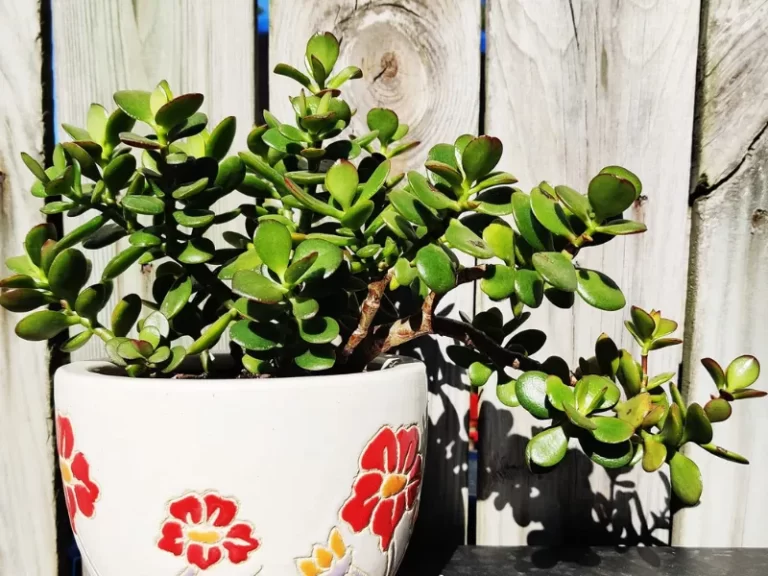Sunburned Jade Plant: Signs + How to Recover the Plant
Healthy jade plants are beloved for their ornamental appeal and low maintenance requirements. However, these plants are vulnerable to sunburn, which causes damage to the leaves and stems. You can recover a sunburned jade plant depending on the level of damage. However, sometimes the damage is permanent if you don’t save the plant early.
A sunburned jade plant will have scorched leaves with brown patches. The foliage may also appear limp and wrinkled. Move the plant away from direct sunlight and place it under the shade, then prune away the damaged leaves to allow new ones to emerge.
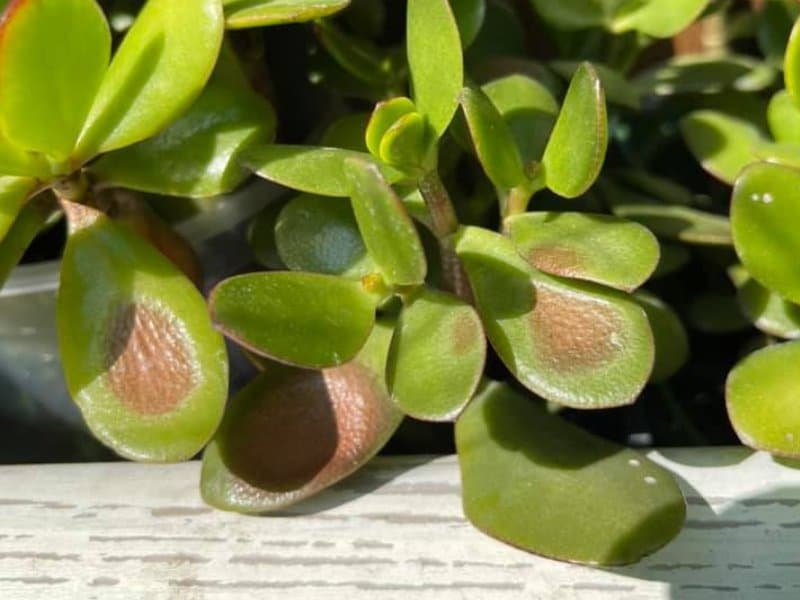
Is my jade plant getting too much sun?
When you start to spot signs of sunburn on the leaves of your jade plant, you’re overexposing it to direct sunlight. Despite being a plant native to desert regions, this succulent might show signs of damage when exposed to harsh sun rays.
Also, young jade plants cannot handle direct sunlight and are more likely to suffer sunburn if kept in such conditions.
JADE PLANT: BEST TIPS + TRICKS
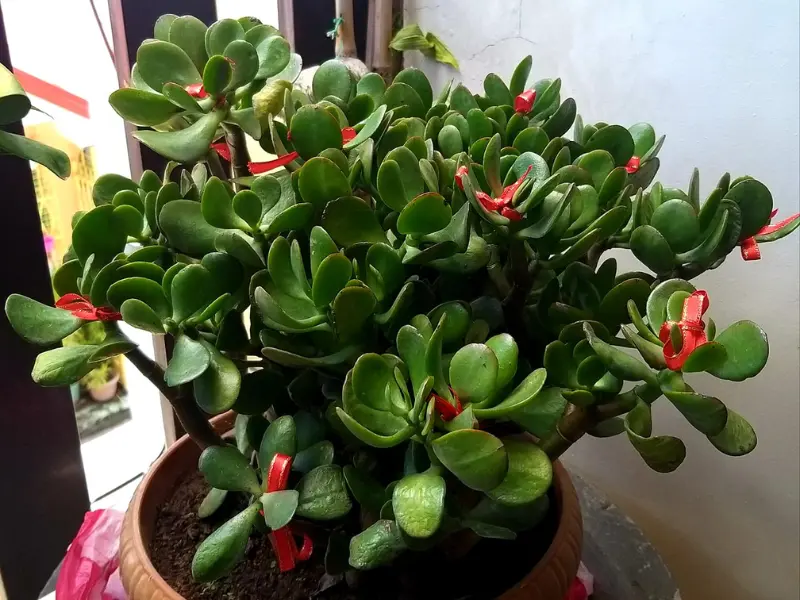
I’ve put together tips and tricks for healthier, happier jade plants that I’ve learned over the years in a single guide for you.
The signs of sunburn in jade plant include:
- Leaf yellowing: As the jade plant continues being exposed to the sun’s rays, the heat from the sun dehydrates the leaves. They subsequently lose their green shade and turn yellow.
- Brown spots: Brown or bleached spots on jade plants indicate overexposure to scorching sunlight.
- Crispy leaves: As the sunlight dries out the soil on which the jade plant grows, the plant develops moisture stress, with the leaves turning crispy.
- Droopy leaves and branches: With the soil drying up due to scorching sunlight, the moisture stress causes the leaves to droop, while the stems become brittle and weak.
The foliage of your jade plant may also wrinkle due to excessive moisture loss.
Can a jade plant recover from sunburn?
A jade plant can recover from sunburn. However, you will have to remove the leaves that have suffered significant damage.
Sunburn mainly affects the leaves and branches of the jade plant but won’t kill the rest of the plant. In fact, jade plants usually acclimatize to the sun’s intensity after a while.
You should also prune severely sunburnt stems, as they’re more susceptible to rot that can spread to the rest of the plant. Severely sunburnt stems and branches usually show signs of rot, such as black or brown lesions.
Once you prune the sunburnt shoots and provide the plant with the necessary care, you should see new shoots popping up within a few weeks.
How do you fix a sunburned jade plant?
The sooner you move the plant away from sunlight, the easier it will be to save it with a few healthy leaves. Most scorched jade plant leaves will not turn green, so act with haste to prevent extensive damage to the plant.
Here’s how to fix a sunburned jade plant and save it:
1. Relocate the plant away from harsh sunlight
If your jade plant is outdoors, relocate it inside where it still gets bright, filtered sunlight instead of direct scorching sunlight.
2. Prune sunburnt foliage
Jade plant leaves that have suffered severe sunburn damage won’t recover, even after plant relocation. You should, therefore, prune the severely burned leaves using a pair of pruning shears. Correct pruning leaves the jade plant healthier and able to grow easily.
3. Water the plant
Since intense sunlight dries the soil and dehydrates the jade plant, water the topsoil to revive the plant. However, excessive moisture isn’t good for jade plants.
Stop watering the jade plant immediately after the water starts flowing out through the drainage holes.
4. Lightly feed the plant
Applying a mild fertilizer will also help revive a jade plant suffering from sunburn. Mild fertilization should only be done 1-2 weeks after the sunburned jade plant has been relocated and watered.
Applying fertilizer too soon while the plant is still weak from the effects of sunburn can further damage the plant.
5. Mist the leaves
During the hottest summer days, mist the leaves of your jade plant every 3-4 days to minimize the effects of excessive sunlight on the plant.
Misting is best done in the morning. Avoid misting in the evening as it creates a conducive environment for fungal infections.
6. Acclimate the plant
Once your jade plant has fully recovered from sunburn damage, you can return it outside. You need to slowly acclimate the plant to outdoor sunlight intensity, though, as introducing it directly to harsh ultra-violet sun rays might expose it again to sunburn.
First, place the jade plant in a spot where it only receives partial sunlight for up to a week. Afterward, you can transfer it to a spot where it receives full, uninterrupted sunlight.
Improper care practices that can cause sunburn
Poor care and maintenance practices that usually result in jade plant sunburn include:
- Going too long without watering the plant
- Introducing your jade plant to full sunlight right away
- Exposing indoor jade plants to direct/unfiltered sunlight
Going too long without watering
While the jade plant is a succulent that needs little water to flourish, this doesn’t mean that you should neglect the plant. For example, sunburn is likely to occur in the hot summer months due to the intense sunlight and accompanying scorching temperatures. As such, the soil dries up much faster.
Water the plant more frequently to prevent sunburn.
Introducing your jade plant to full sunlight right away
The chances of sunburn increase if you prematurely introduce your jade plant to full sunlight. Ideally, after being potted, the plant should be placed in a shaded area before being gradually introduced to full sunlight within a couple of weeks.
Exposing indoor jade plants to direct/unfiltered sunlight
Indoor jade plants risk sunburn if they are on a window sill receiving direct sunlight. While bright sunlight is necessary, direct sunlight will cause sunburn, especially in the summer.
Ensure you provide bright but filtered sunlight. You can install curtains on your window to filter the light coming in.


